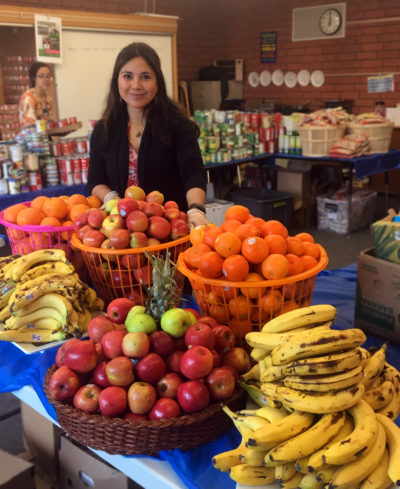Second Harvest serves more than a quarter of a million people each month. So how can we make sure each client enjoys a positive experience? Joyful faces greet stacks of fresh produce and smiling volunteers, but some emotions are harder to see. We last checked in with the Client Innovation team in April at their farmers’ market style Food Sharing Lab. This time, we’re seeing how the group works with clients to co-create improved experiences.

Guided brainstorming activities lead participants to harness their experiences to improve our services.
The Client Innovation team has engaged over 350 clients, potential clients, and strategic partners through brainstorming events and interviews. Olivia Teter, Head of Client Innovation, explains why engaging with clients is important. She states, “Many people who could benefit from our services aren’t getting help. We recognize that clients facing food insecurity deal with complex lives and emotions. We have to earn the trust of those in need so that we can truly serve them.” The Client Innovation team invites diverse groups, many of whom might face language or logistical barriers to communicating their feedback, to share their opinions. Vietnamese retirees, Latina mothers, and young people struggling with homelessness have shared their responses to the question “How might our community ensure that every one of us is well-fed from now on? “ People are grateful to participate in creating solutions.
These sessions have revealed varied emotions that clients might have been reluctant to share. For example, many clients discover an unexpected sense of community when they see neighbors getting help. The sight of volunteers, who are often also clients, working together instills hope and stability in those facing insecurities throughout their lives. One volunteer described how she frequently visits individuals who are “down to their last potato.” Clients often feel an immense gratitude for both the emotional and physical relief provided by Second Harvest.
On the other hand, a high level of need can create a sense of anxiety. Some clients confront scarcity on a daily basis. This insecurity informs why clients might feel uncomfortable waiting in line or seeing a large family carry away boxes of food. Some potential clients feel embarrassed needing help to provide for their families. In response, Client Innovation focuses on abundance and gratitude. Creating a beautiful and friendly experience helps to reduce stigma and make everyone feel welcome.
Clients have embraced these opportunities to share their voices and shape services in their communities. One mother at the Food Sharing Lab explained, “[people] want to transform the culture around food programs into something more meaningful. People gathering around, sharing and abundance.” Co-creation with clients has supported a holistic approach to food banking that recognizes not only physical but also emotional hunger.

Displaying abundance comforts and welcomes clients struggling with food insecurity.